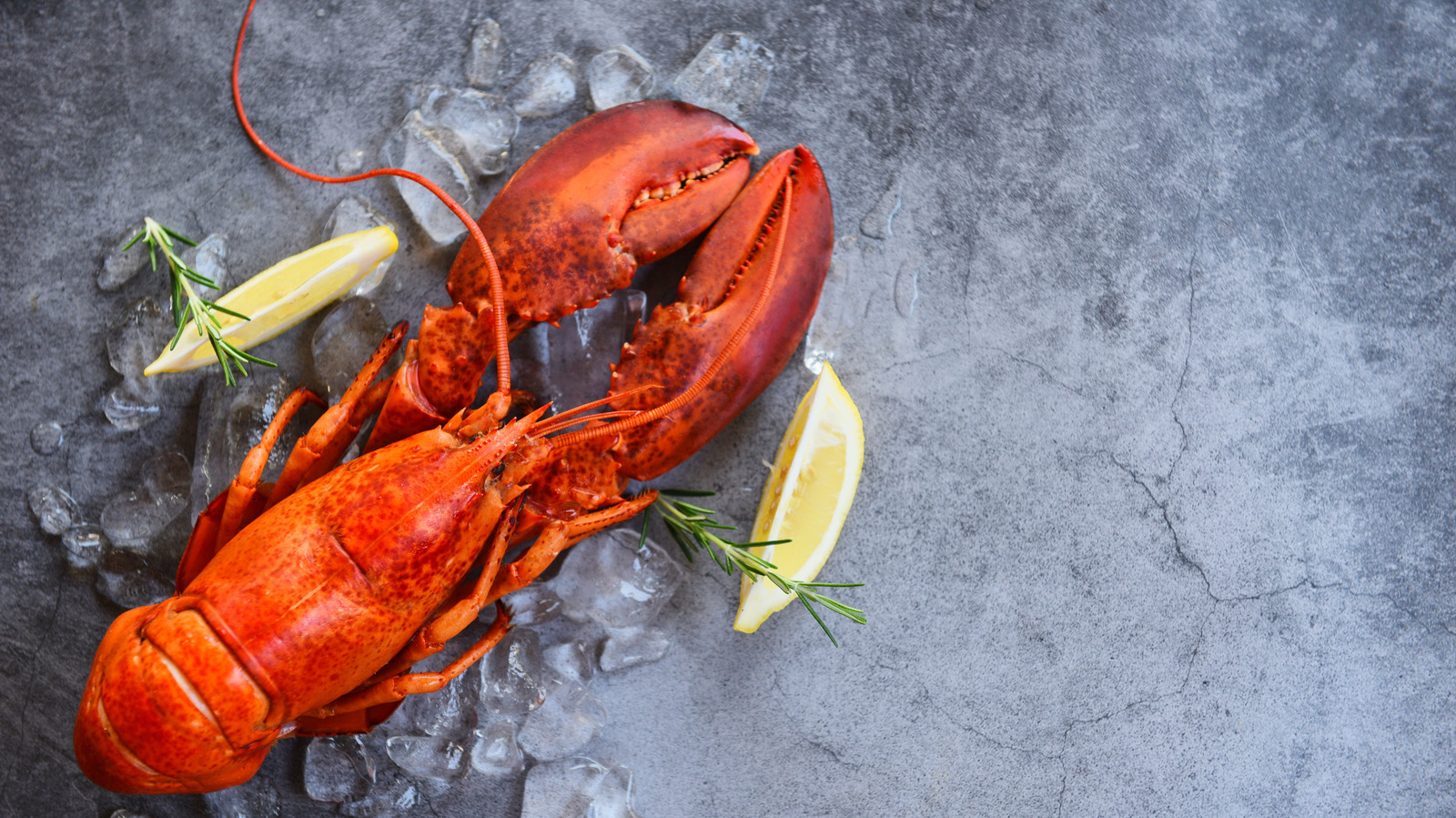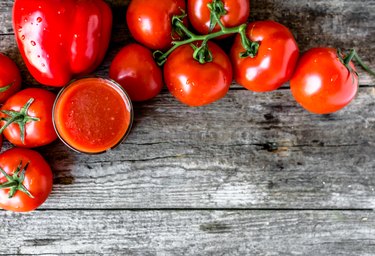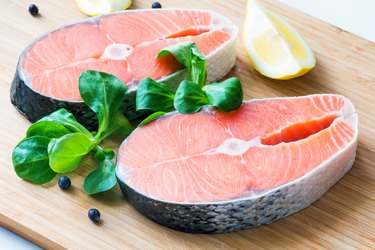Its easy to order lobster from a restaurant, but when you cook it yourself, you’ll understand how much better professional chefs and cooks do their jobs.
If you want to know how to cook lobster, you should know how to tell if it’s done. If you don’t, you might serve seafood that is too rare or too cooked.
When cooking any type of seafood, you want to make sure its cooked all the way through. Natalia Levey, a professional chef and restaurant owner, told us the definitive signs that lobster is done cooking.
Lobster is one of the most prized seafood delicacies. When properly cooked lobster meat is succulent sweet and delicious. However, eating undercooked lobster can be a risky proposition that may lead to foodborne illness or other health issues. In this article, we’ll explore what can happen if you eat lobster before it’s fully cooked.
What Defines Undercooked Lobster?
So how can you tell if a lobster is undercooked? There are several signs to look out for
- The color of the shell may appear translucent or show tints of blue or green rather than a bright, opaque red.
- The meat inside the shell looks glassy and translucent instead of being an opaque white.
- The texture is mushy and jelly-like rather than firm.
- Pressing the meat with your finger leaves an indentation rather than bouncing back.
- The juices that come out when you crack it open are milky looking rather than clear.
- The aroma is overly fishy rather than having a sweet, ocean-fresh scent.
- The internal temperature reads below 140°F when checked with a food thermometer.
If you notice any of these characteristics, it’s likely your lobster is undercooked. The shell and meat require adequate time and temperatures to fully cook through and become safe to eat.
Health Risks of Eating Undercooked Lobster
So what potential health issues can undercooked lobster cause? Here are some of the main concerns:
Foodborne Illness
One of the most common risks is developing a foodborne illness. Raw or undercooked seafood may contain disease-causing bacteria, viruses or parasites. Common culprits include:
- Salmonella
- Vibrio bacteria
- E. coli
- Hepatitis A virus
- Norovirus
Eating undercooked lobster can lead to typical food poisoning symptoms like nausea, vomiting, abdominal cramps, diarrhea, fever, chills, and headache. For some pathogens, it may take 12-72 hours after ingestion to start feeling sick.
Vibrio Infection
Undercooked shellfish may contain Vibrio bacteria, which naturally live in coastal waters. Vibrio vulnificus is a species that can be very dangerous. It can cause septicemia, an infection of the bloodstream, that has a mortality rate exceeding 50% in susceptible individuals.
Other Vibrio infections can result in gastroenteritis characterized by watery diarrhea, abdominal pain, nausea, and vomiting. Usually symptoms begin within 24 hours of eating contaminated seafood.
Parasites
Eating undercooked lobster also raises the risk of parasitic infections. Parasites may be present in raw or uncooked shellfish and crustaceans. One parasite of concern is Anisakis simplex, a nematode worm that can cause anisakiasis when ingested. Symptoms include nausea, vomiting, diarrhea and severe abdominal pain as the parasites penetrate the gastric mucosa.
Allergic Reaction
Some people have allergies to shellfish proteins. Consuming undercooked lobster may present enough allergen to trigger an allergic reaction. This could range from mild hives and itching to the potentially fatal reaction known as anaphylaxis. People with a shellfish allergy should avoid undercooked lobster altogether.
Toxin Exposure
Certain toxic planktons and algae, like red tide, can produce toxins that accumulate in shellfish tissues. Eating undercooked lobster contaminated with these toxins puts you at risk for illnesses collectively known as shellfish poisoning. Depending on the specific toxin, this can cause diarrhea, vomiting, paralysis, respiratory distress, and neurological symptoms.
Digestive Issues
Beyond specific infections and toxins, the mushy texture of undercooked lobster makes it harder to digest. You may experience indigestion, upset stomach, heartburn, nausea or other gastric distress when eating undercooked lobster due to its rubbery texture.
As you can see, there are a number of potential health hazards associated with consuming undercooked lobster. The good news is these risks can be easily avoided by properly cooking lobster to safe internal temperatures. Keep reading for tips on ensuring your lobster is thoroughly cooked.
How to Cook Lobster to Avoid Undercooking
Cooking lobster thoroughly is the best way to prevent potential issues. Here are some key tips:
-
Use a food thermometer – This takes the guesswork out of determining doneness. Insert into the thickest part of the tail and cook until it reaches 140°F.
-
Pay attention to visual cues – The shell should turn bright red and the meat should become opaque white when fully cooked.
-
Follow recommended cooking times – Boiling/steaming times are generally 10-15 minutes per pound. Grilling takes 8-12 minutes per pound.
-
Bring water to a rolling boil before adding lobsters for boiling/steaming. This instantly starts cooking process.
-
Watch out for size differences if cooking multiple lobsters together. Remove smaller ones sooner.
-
Split lobster lengthwise before grilling so meat is exposed directly to heat source.
-
Check for translucent spots after cooking, especially in the tail and claw joints which can undercook.
-
Allow a resting period of 2-3 minutes after cooking before serving for heat to evenly distribute.
Taking these precautions helps ensure your lobster reaches required internal temperature for eliminating potential pathogens or parasites.
What to Do if You Eat Undercooked Lobster
Despite your best efforts, you may end up with an undercooked lobster on your plate. If you suspect you’ve eaten undercooked lobster, here are some recommended steps:
-
Stop eating the lobster immediately once you realize it seems undercooked. The less you ingest, the lower your risk.
-
Contact your doctor if you begin experiencing concerning symptoms like diarrhea, vomiting, fever or allergic reaction.
-
Drink plenty of fluids like water, juice, broth and electrolyte beverages to prevent dehydration from potential diarrhea.
-
Watch for severe symptoms like blood in stool, high fever, muscle weakness, or difficulty breathing that require prompt medical care.
-
Monitor symptoms for 48 hours since foodborne illnesses can take time to manifest. Call your doctor if symptoms persist or significantly worsen.
-
Report the incident to the restaurant or retailer where you purchased the undercooked lobster so they can investigate their preparations.
-
Consider taking probiotics to support your gut health and beneficial bacteria levels after potential food poisoning.
While an isolated instance of eating mildly undercooked lobster is unlikely to cause major issues in otherwise healthy adults, it’s still wise to take precautions. Heeding the proper cooking instructions and food safety guidelines can help mitigate your risk.
Frequently Asked Questions
Here are answers to some common questions about eating undercooked lobster:
How soon after eating undercooked lobster will you get sick?
It can take anywhere from 1-4 days to develop symptoms from pathogens like bacteria, viruses or parasites found in undercooked lobster. Some may have a shorter incubation period of just a few hours. Monitor yourself closely for at least 48 hours.
Is undercooked lobster chewy or rubbery?
Yes, lobster meat that is not fully cooked through tends to have a mushy yet rubbery texture that can be hard to chew and digest. Properly cooked lobster is tender and delicate.
Does undercooked lobster taste fishy?
The taste of undercooked lobster may be more overtly fishy rather than sweet. The flavors don’t have a chance to develop fully. Any abnormal taste or smell could signify undercooking.
Can you get food poisoning from slightly undercooked lobster?
There is a small risk of food poisoning from lobster that is just slightly undercooked, though thoroughly cooking it eliminates the vast majority of potential pathogens. People with compromised immune systems are at higher

What Does Undercooked Lobster Look Like?
When you think of lobster, you likely imagine a bright red shell. But live lobsters dont start out this color. A live lobster has a green or black hue due to its different pigments.
But when its fully cooked, all the other pigments (except red) wont show, according to the University of Maine. This is why the bright red color of a lobster is associated with it being fully cooked.
The color of the outside shell of an undercooked lobster is more like the color of a live, uncooked lobster because it still has some green or black pigments in it.
“Uncooked lobster will appear translucent toward the center and light pink closest to the shell,” Levey says. “It will be soft to the touch. “.
Signs Lobster Is Cooked
One way to tell if lobster is done is to use a meat thermometer to check the internal temperature. There are also physical signs to look for that will tell you when lobster is done cooking.
How long your lobster takes to cook depends on the size and cooking method. “The average lobster size people usually work with is a pound and a quarter. “This will boil or steam for about 9 to 12 minutes, depending on how big and fresh the lobster is and what tools are used,” Levey says.
“Think of boiling lobster like boiling pasta. The timer starts when you add the lobster to the pot of boiling water. “.



